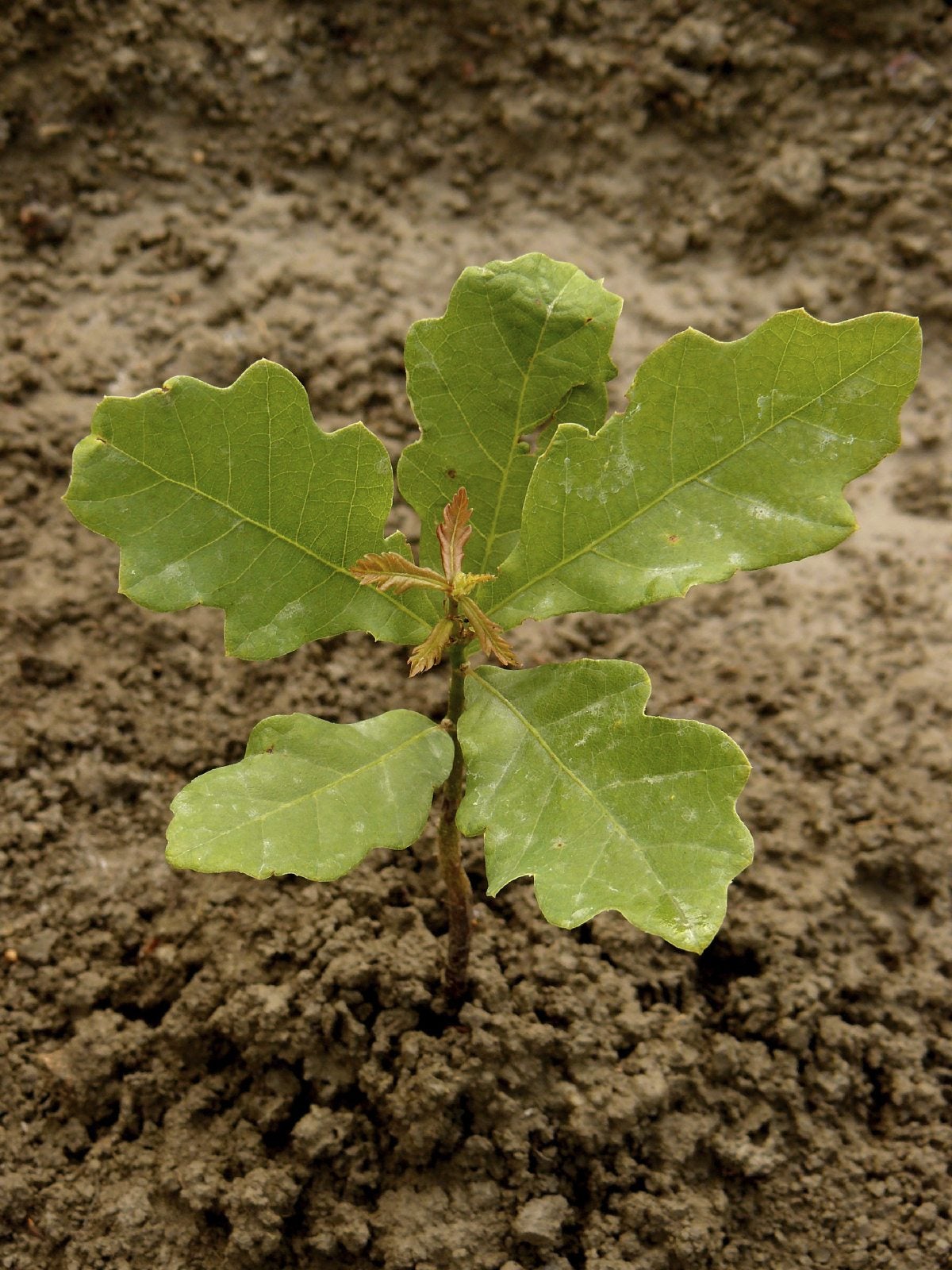Propagating Oak Trees - Learn How To Grow An Oak Tree


Oak trees (Quercus) are among the most common tree species found in forests, but their numbers are declining. The main cause of the decline is the value of acorns and young saplings as a food source for wildlife. You can help the tree recover its former glory by starting and planting oak tree seedlings following the instructions in this article.
Propagating Oak Trees
For convenience, the many species of oak are divided into two main groups: red oaks and white oaks. You can tell which group an oak belongs to by taking a close look at the leaves. Red oak leaves have pointed lobes with little bristles at the tips, while the lobes on white oak leaves are rounded. Propagating oak trees is good for the environment and it's an easy, fun project for kids. All you need is an acorn and a gallon (4 L.) pot filled with soil. Here are the steps for growing oak trees from acorns.
How to Grow an Oak Tree
Don't gather the first acorns that fall. Wait until the second flush begins to fall, and then collect several handfuls. You might think you are collecting a lot more than you need, but the germination rates for acorns is low, so you need lots of extras. Check the leaves to determine whether you are collecting white oak or red oak acorns and label the containers if you collect some of each. Visually examine your acorns and throw away any that have small holes where an insect may have bored in, as well as those that are off colored or moldy. The caps of mature acorns come off easily. Go ahead and remove them during your visual inspection. Soak the acorns in a container of water overnight. Damaged and immature seeds float to the top, and you can scoop them off and discard them. White oak acorns are ready for planting right after soaking, but red oak acorns need a special treatment called stratification. Place the red oak acorns in a zipper bag with moist sawdust or peat moss. You don't want the sawdust or peat moss soaking wet, just lightly damp. Leave them for eight weeks, checking every two weeks or so to make sure they aren't molding. Remove molded acorns and leave the bag open to allow fresh air in if you see signs of mold. Fill pots that are at least 12 inches (31 cm.) deep with potting soil. Plant the acorns an inch (2.5 cm.) deep. You can plant several acorns in each pot. Transplant the seedlings to a permanent location when the first leaves unfurl. If you only have one seedling in the pot, you can keep it indoors in a sunny window for up to three months. If you prefer to plant the acorns directly in the ground, take care to protect them from wildlife.
Oak Tree Care
Early on, oak tree saplings are in danger of being consumed by wildlife. Place cages over newly planted saplings and replace them with chicken wire fences as the sapling grows. Keep the tree protected until it is at least 5 feet (1.5 m.) tall. Keep the area surrounding young oak trees free of weeds and water the soil around the tree in the absence of rain. The tree won't develop strong roots in dry soil. Don't fertilize the tree until its second year after planting. Even then, only use fertilizer if the leaves are pale, or the tree is not growing as it should. Keep in mind that oak trees grow very slowly at first. Feeding the tree to encourage fast growth weakens the wood. This can lead to splits in the trunk and broken branches.
Sign up for the Gardening Know How newsletter today and receive a free copy of our e-book "How to Grow Delicious Tomatoes".

Jackie Carroll has written over 500 articles for Gardening Know How on a wide range of topics.